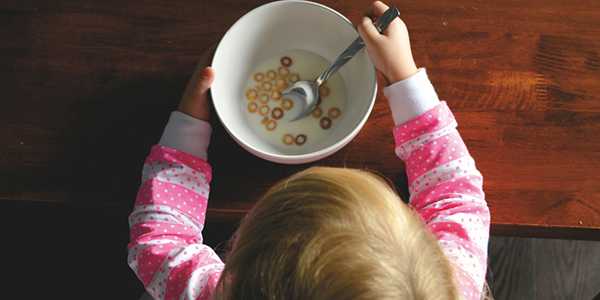Ready to Start Your Baby on Solids? Step-by-Step Guide to Baby's First Food
Your baby watches your food closely. Reach out and pick up the plate. And imitate chewing or not? These signs usually mean they are ready for an exciting new step: the start of solid food! But where should you start? What types of food are safe? And how do you relieve stress during mealtimes? Transitioning to Solid can be fraught with questions. Here are some tips for starting your baby on solid foods that support health.
When should you give your child solid food?
The American Academy of Pediatrics recommends eating solid foods around 6 months of age. At this point, most babies show signs of readiness for solid foods, such as good head control. Sitting with support and showing interest in what others eat. Remember, every baby develops at their own pace, so please consult your paediatrician before introducing solids.
Signs that your baby is ready for solids:
Able to sit with little or no support.
Loss of tongue-throwing reflex (push food out with tongue)
Show your curiosity about food by watching others eat.
Open your mouth when serving food.
If your baby meets these signs and reaches the recommended age, It might be time to start feeding solid food!

How to start identifying solids?
Solid starting doesn't have to be complicated. Here's a step-by-step guide to getting started.
Start slowly: Start with feeding once a day. They offer single-ingredient foods, such as iron-rich baby cereals, pureed fruit or vegetables.
One at a time: Introduce one new food every three to five days. This gives you time to look for potential allergic reactions, such as rashes, inflammation, or breathing problems.
Texture and Consistency: Start with a thin, smooth puree and gradually move to thicker textures as your baby gets used to the solids.
Use child-safe utensils: Small soft spoons are ideal for eating. Avoid forcing the spoon into your mouth. Try to let your baby explore and eat at their own pace.
The best first food for your baby
When talking about the first meal Many parents start with iron-rich baby food, pureed fruit or vegetables. Here are some beginner options that are gentle on the stomach and packed with nutrients.
Cereals rich in iron: Made from rice or oats. These cereals are easy to digest and help prevent iron deficiency.
Pureed vegetables: Vegetables such as sweet potatoes, carrots, and peas are naturally sweet and easy for babies to accept.
Fruit puree: Fruits such as apples, pears, bananas, and avocados provide essential vitamins and minerals.
Protein-Rich Foods: Once your baby has tried some basic foods. You can introduce ground meat, lentils, and tofu to add protein and iron.
Tips for eating delicious food
Transitioning to solid foods is a learning experience for you and your baby. Here are some tips for making meals enjoyable and stress-free:
Create a routine: Try to breastfeed your baby at the same time every day to create a routine.
Choose a quiet environment: Reduce distractions. And create a quiet atmosphere for dining. Babies are open to new experiences. More in a calm environment
Go at your baby's pace: Every baby is different. Some people eat a lot at once. While some people need more time to adjust.
Fun: Introducing new food with enthusiasm and making funny faces to keep the baby entertained at mealtime.
Common challenges when starting solids (and how to overcome them)
A solid start is full of new experiences. And it may come with some obstacles along the way. Here's how to deal with common challenges.
Food Rejection: Don't worry if your baby doesn't like a new food. It may take 10-15 tries to be accepted. Be patient and continue to eat a variety of foods.
Mess: Expect a little mess. Consider using an apron and placing a cloth or mat under the high chair.
Choking: Choking is a common reflex when babies learn to handle food. If you keep your mouth shut often Try sucking on the puree until your baby is more comfortable with it.
Foods to avoid for infants under one-year-old
For infants younger than 12 months, certain foods should be avoided due to potential health risks. These include
Honey: Babies may carry spores that cause botulism.
Cow's milk: Avoid using it as the main beverage. (You can use a small amount in the recipe)
Choking hazard: Avoid foods such as whole grapes, nuts, popcorn, and large pieces of meat.
Foods high in sodium or sugar: Baby's kidneys are sensitive. Therefore, salt and sugar should be limited.
Creating a Balanced Diet for Your Baby
Once your baby has tried many different foods You can start combining different food groups. Can be together Aim for a balanced diet that includes:
Fruits and vegetables: Provide vitamins, minerals, and dietary fiber.
Grains: Provide energy through cereals, rice, and other grains.
Protein: This includes lean meat, lentils, and beans.
Dairy (around 9-12 months): You can start giving small amounts of yogurt or cheese.

Promote your child's love of food
Introducing your baby to solid foods can be a fun and bonding experience. By following the baby's commands Follow a relaxed approach. And offer a variety of nutritious food You will help them build positive associations with food. And it's not just about nutrition. It's also about discovering, growing, and creating lasting, healthy habits together. Embrace each meal as a stepping stone to new flavors, textures, and skills. It sets the stage for a lifelong appreciation of food.
FAQ
Q: How much breastfeed should I breastfeed?
A: At first, a few tablespoons are enough. Gradually increase the portions. When your baby feels more comfortable
Q: Should I give my baby water?
A: Breast milk or formula provides the required hydration. But you can sip a small amount of water (about 1-2 ounces) with food after 6 months.
Q: Is baby feeding season possible?
A: Babies naturally like mild flavors, so there is no need to add salt or sugar. Instead, enhance the flavor with mild herbs like basil or oregano.





